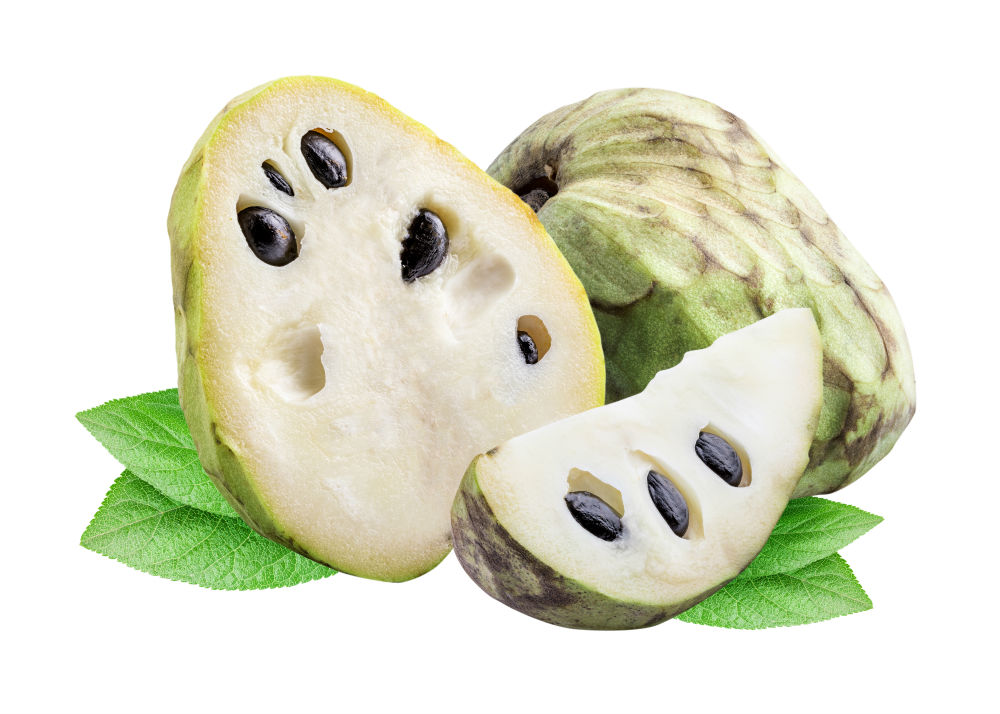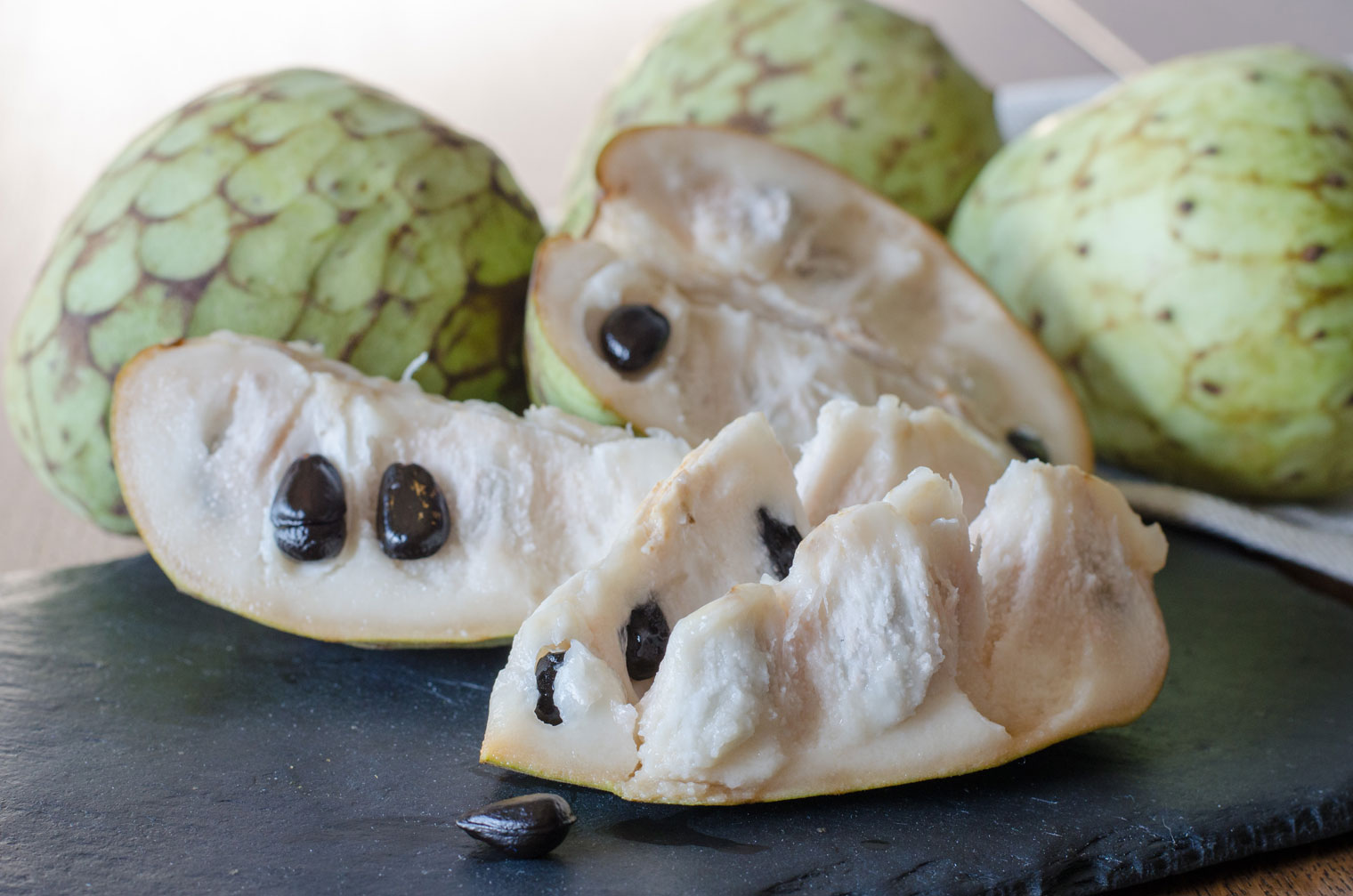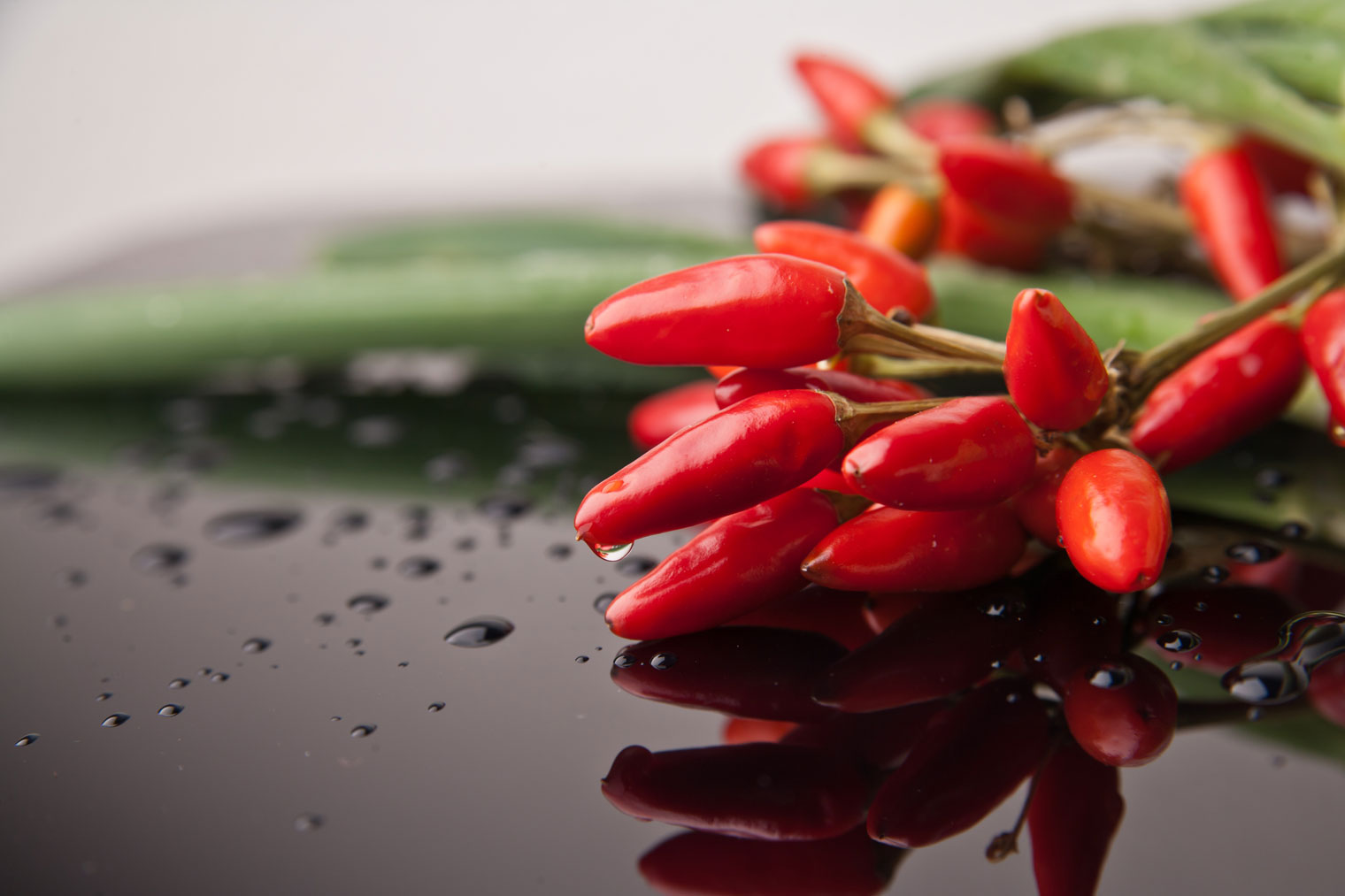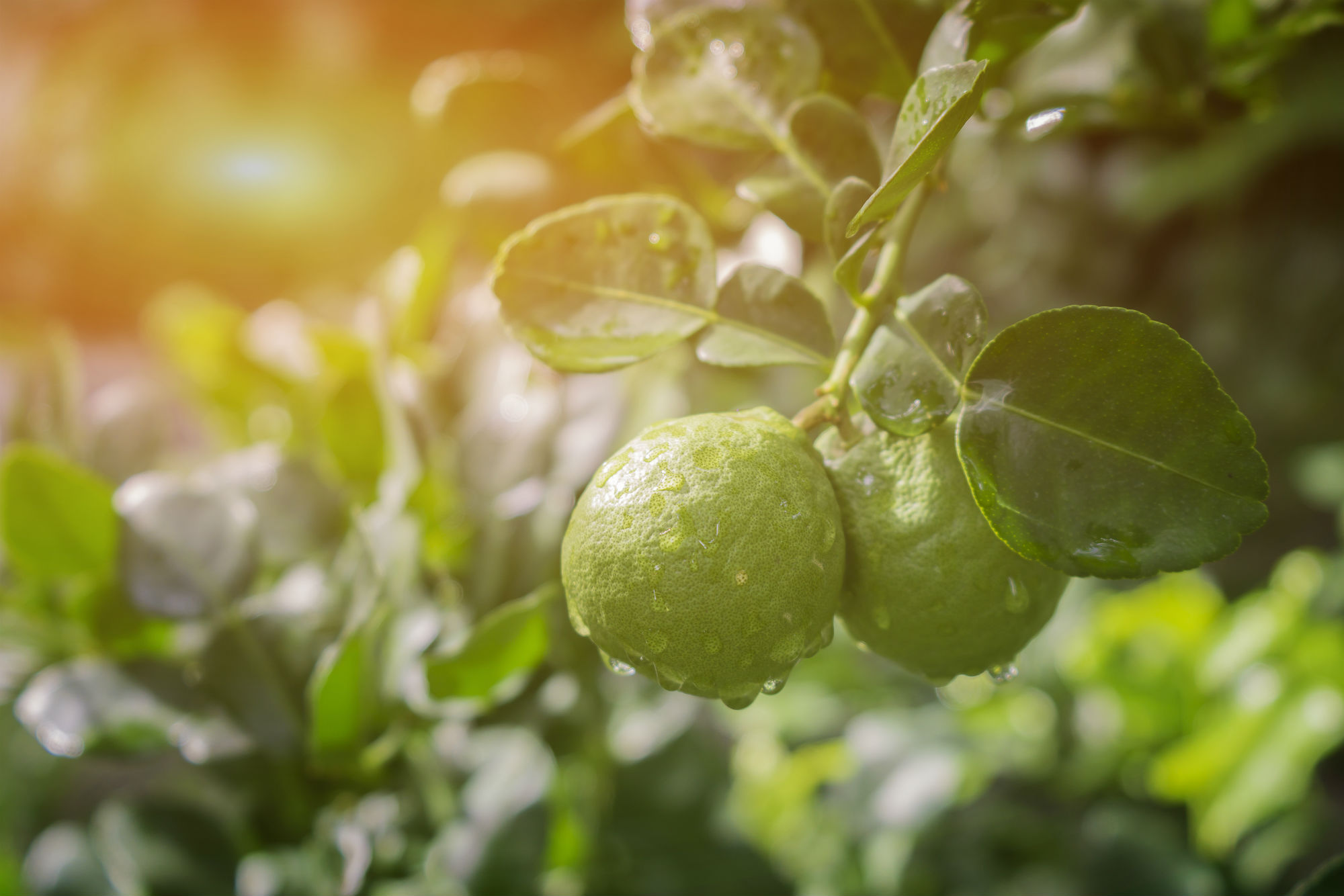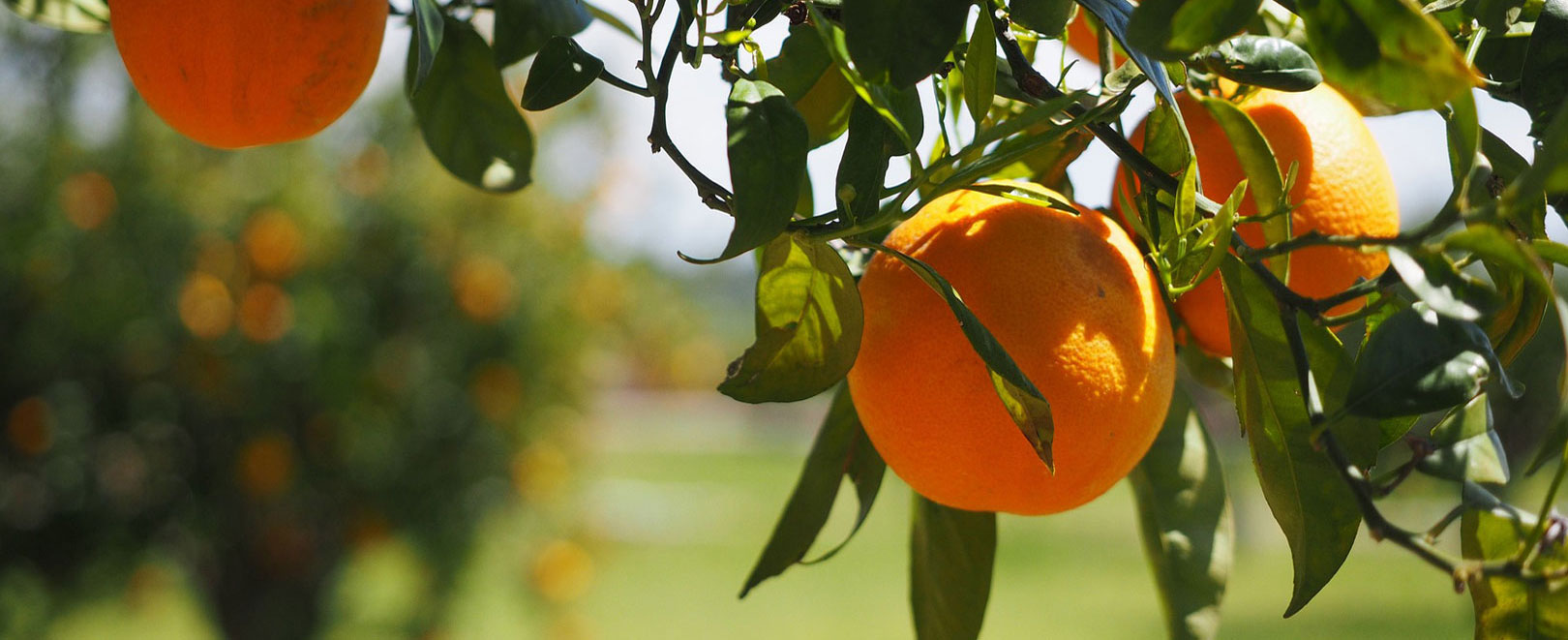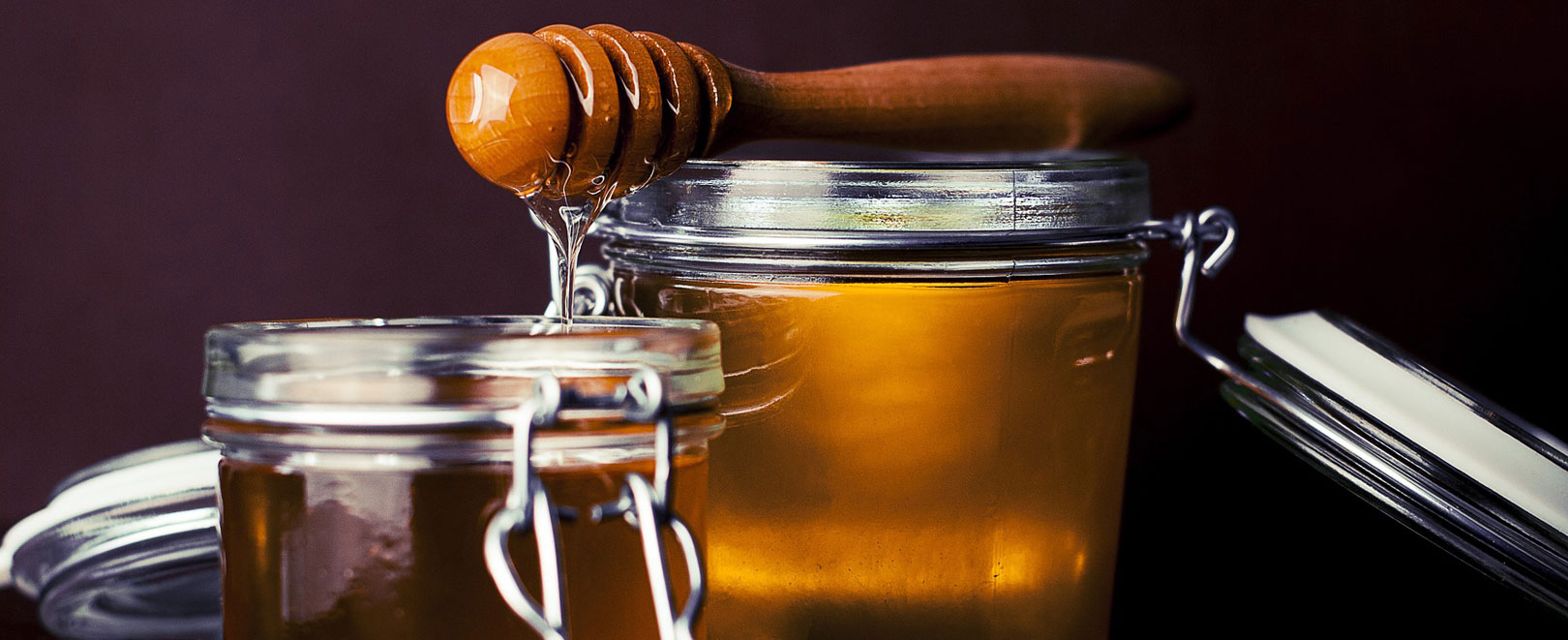The Annona is a fruit plant native to the Andean highlands of Peru, Ecuador, Colombia, and Bolivia, and is almost unknown in Europe. Interestingly, however, this fruit, with its exquisite taste, has been consumed on Calabrian tables for over 200 years.
The region’s mild and favourable climate has allowed the Annona Cherimola to quickly become a part of the local landscape, with small leafy shrubs that bloom in May, making the fruit a protagonist in the Reggio cuisine.
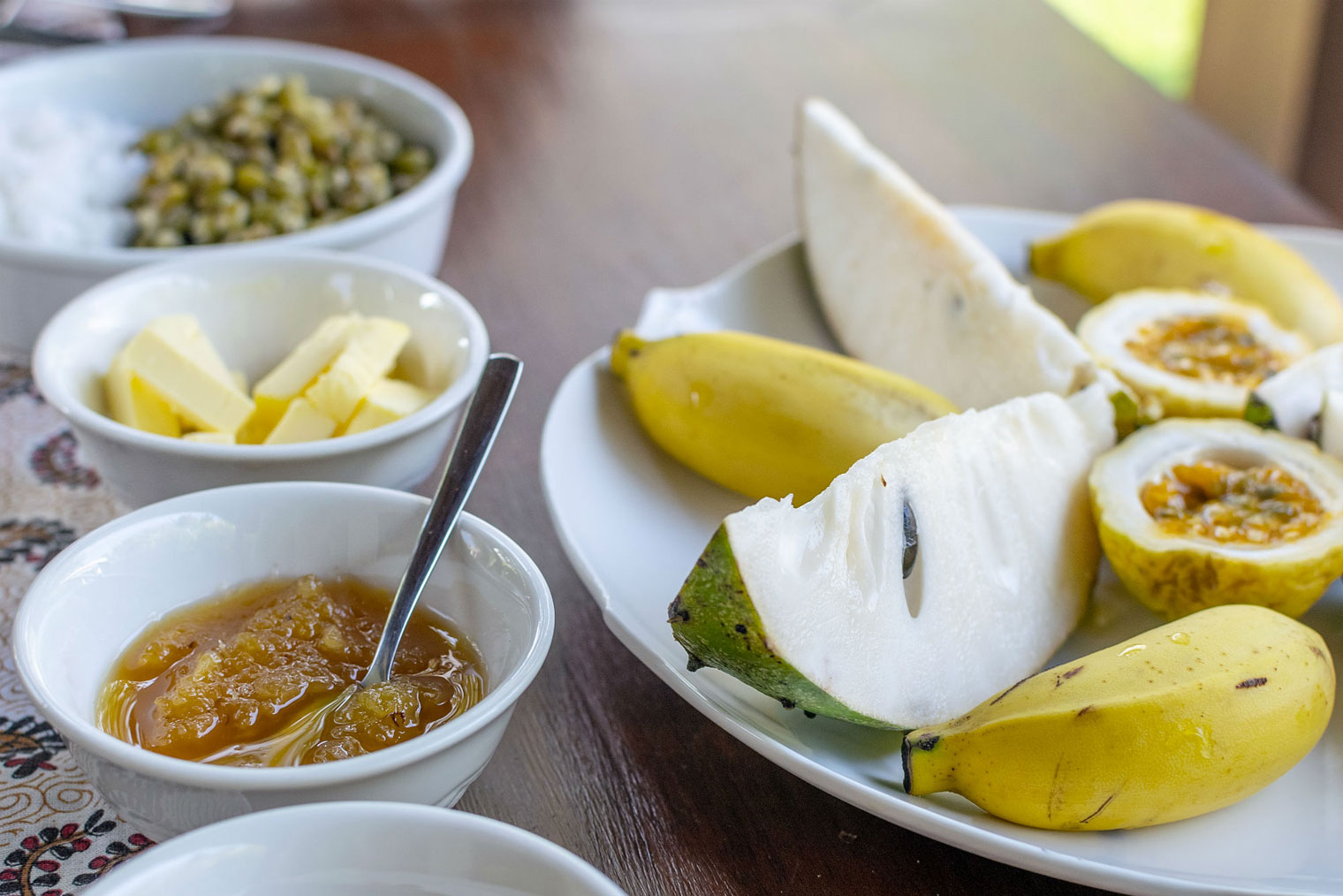
They taste great and are healthy, too
The slightly lumpy skin of different shades of green hides a sweet and creamy white pulp that is very rich in healthy nutrients such as B and C vitamins, folic acid, minerals, antioxidants, and fibres. It has a unique taste, is soft, enveloping, and at times acidulous, at times sweet.
It is recommended in developing resistance against infections, accelerating the healing of wounds, and protecting against free radicals. 100g of the fruit (68 Kcal) contains 15.8 g of carbohydrates, 0.2 g of fat, 2.2 g of fibre, and 1.8 g of protein.
DID YOU KNOW THAT …?
The most common variety starts to ripen between late August and September. The fruit harvest begins in late September and ends in mid-December.
A curious history
The first noteworthy harvest of the Annona Cherimoya plant in the areas surrounding Reggio date back to the first half of the 1800s. It was believed that the fruit species could provide a valid alternative to the harvest of citrus fruits with similar climactic requirements. Today, the Cherimoya is harvested in a non-intensive way and has earned the Municipal Denomination of Origin (De.c.o.), “Annona di Reggio”.
A versatile fruit
The sweet and aromatic taste, which is widely appreciated and similar to that of many other exotic fruits, brings together a special mix of aromas and flavours such as those of banana, pear, strawberry, pineapple, and other tropical fruits. Its unique and original taste makes the Annona an ingredient that is widely used in confectionary products that are based on its flavours, such as ice cream, baba, pastries, sorbet, and various other desserts.
The most delicious fruit known to man.

Mark Twain
American writer, humorist, aphorist and lecturer